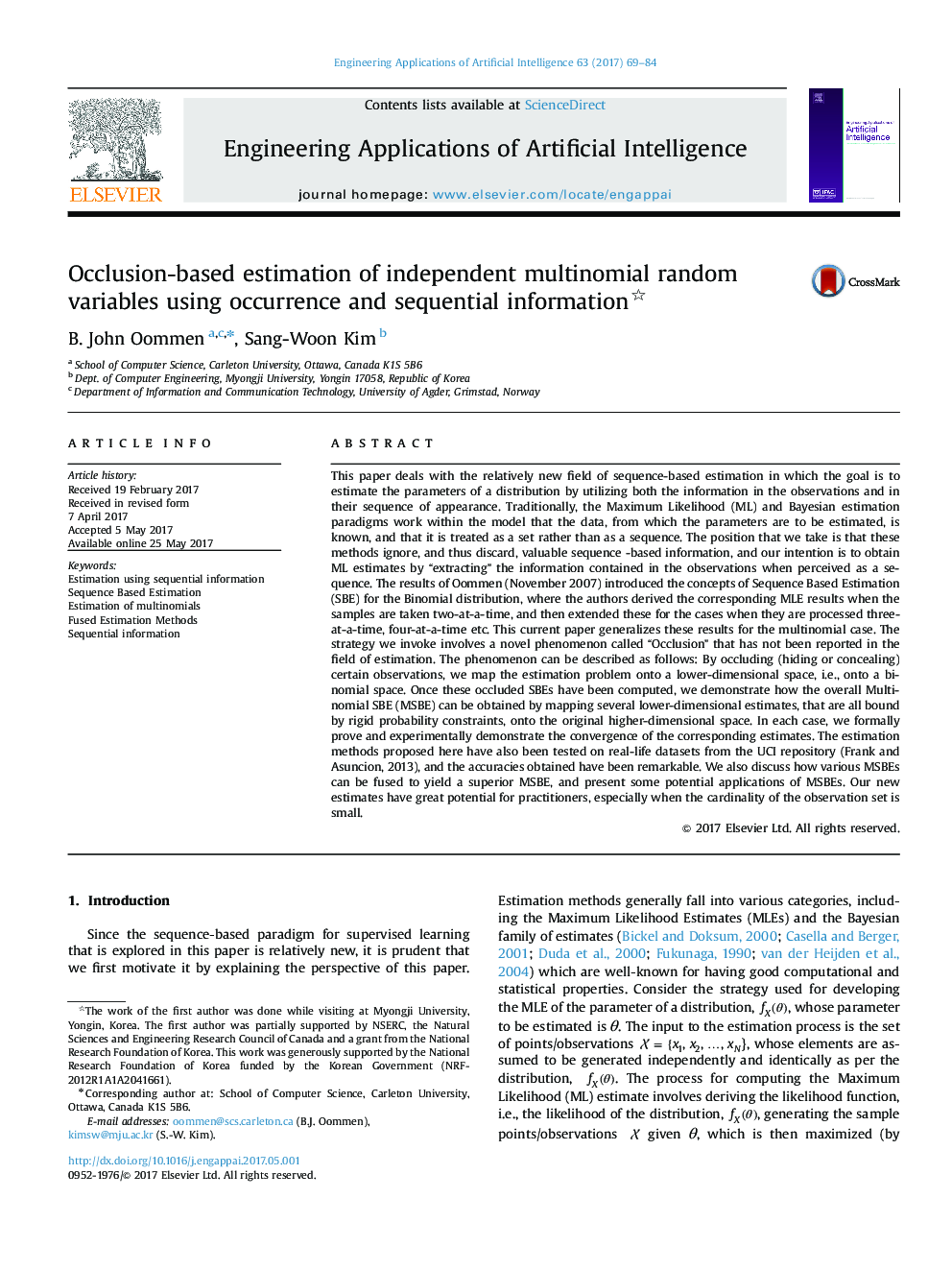| Article ID | Journal | Published Year | Pages | File Type |
|---|---|---|---|---|
| 4942687 | Engineering Applications of Artificial Intelligence | 2017 | 16 Pages |
Abstract
This paper deals with the relatively new field of sequence-based estimation in which the goal is to estimate the parameters of a distribution by utilizing both the information in the observations and in their sequence of appearance. Traditionally, the Maximum Likelihood (ML) and Bayesian estimation paradigms work within the model that the data, from which the parameters are to be estimated, is known, and that it is treated as a set rather than as a sequence. The position that we take is that these methods ignore, and thus discard, valuable sequence -based information, and our intention is to obtain ML estimates by “extracting” the information contained in the observations when perceived as a sequence. The results of Oommen (November 2007) introduced the concepts of Sequence Based Estimation (SBE) for the Binomial distribution, where the authors derived the corresponding MLE results when the samples are taken two-at-a-time, and then extended these for the cases when they are processed three-at-a-time, four-at-a-time etc. This current paper generalizes these results for the multinomial case. The strategy we invoke involves a novel phenomenon called “Occlusion” that has not been reported in the field of estimation. The phenomenon can be described as follows: By occluding (hiding or concealing) certain observations, we map the estimation problem onto a lower-dimensional space, i.e., onto a binomial space. Once these occluded SBEs have been computed, we demonstrate how the overall Multinomial SBE (MSBE) can be obtained by mapping several lower-dimensional estimates, that are all bound by rigid probability constraints, onto the original higher-dimensional space. In each case, we formally prove and experimentally demonstrate the convergence of the corresponding estimates. The estimation methods proposed here have also been tested on real-life datasets from the UCI repository (Frank and Asuncion, 2013), and the accuracies obtained have been remarkable. We also discuss how various MSBEs can be fused to yield a superior MSBE, and present some potential applications of MSBEs. Our new estimates have great potential for practitioners, especially when the cardinality of the observation set is small.
Keywords
Related Topics
Physical Sciences and Engineering
Computer Science
Artificial Intelligence
Authors
B. John Oommen, Sang-Woon Kim,
